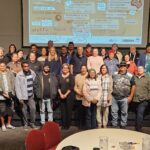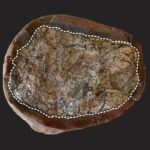A Curtin University of Technology scientist has made a breakthrough that could overturn some elementary tenents of solid-state chemistry and lead to a new branch of materials science.
Associate Professor Nigel Marks has been working with Los Alamos National Laboratory researchers Chao Jiang, Chris Stanek, Kurt Sickafus and Blas Uberuaga, running atomic-scale simulations on nuclear waste, with results indicating that the decay of radioactive isotopes may be used to create new materials for use in industrial processes.
“This research changes many things we thought we knew about atomic structures, how they work and the physical objects they make up,” said Associate Professor Marks, who has conducted the research in the newly-opened $116 million Curtin Resources and Chemistry Precinct.
He said they made their discovery by accident.
Originally running calculations on a possible material for nuclear waste storage — cesium chloride — Associate Professor Marks and his co-workers found that radioactive decay of cesium isotopes into barium created a stable solid.
He said the structure had never been observed before and defied conventional thinking about ionic compounds.
“Based on traditional bonding arguments, we would expect to form barium metal and a salt,” Associate Professor Marks said.
“Instead, through a process of chemical evolution, we had a material form that does not fit into the categories that you are taught as an undergraduate.
“With further understanding, we may be able to use this process in the future to create materials for industrial use with novel properties that are too difficult or costly to make any other way.
“This could eventually be the way that some high value, low mass materials could be manufactured for scientific purposes, electronics and a number of other uses.
“With this sort of fundamental breakthrough, the possibilities are nearly endless.”
Associate Professor Marks and Dr Uberuaga recently presented their research at the Fall Meeting of the Materials Research Society in Boston.


